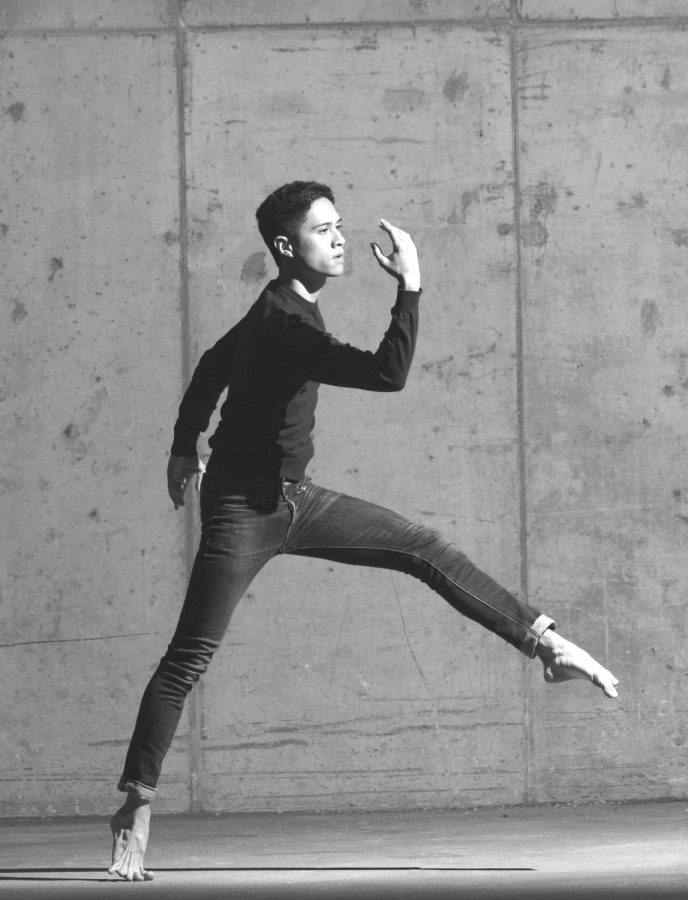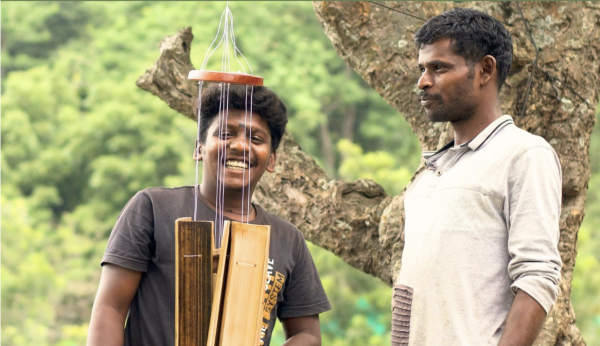On the Record With Al Evangelista: Assistant Professor of Dance
Multidisciplinary artist and Assistant Professor of Dance Al Evangelista recently contributed to the Dance Studies Association’s Chats issue.
Al Evangelista is an interdisciplinary artist, performer, choreographer, and assistant professor of Dance. His work focuses on social justice, queer and Filipinx identity, and technology. He is currently choreographing a performance for this semester’s Spring Back event, exploring movement in spaces and working with audio about recent legislation restricting freedoms for transgender people. Evangelista recently contributed to the Dance Studies Association’s Chats issue and is on the advisory board for the newly established Institute for Empathetic Immersive Narrative at Virginia Tech.
This interview has been edited for length and clarity.
You are choreographing a performance for Spring Back; tell me about your process conceptualizing this work and what we can expect.
This choreography came from thinking through all the legislation that’s happening. The audio that’s coming through the work is from the Senate floor and the news, which we are also incorporating into a drag performance. So we start with this idea of what is happening in the world, and then an actual drag performance happens on stage, which may soon be illegal for children to watch in multiple states. There will be six dancers, and there are two parts to my work. The first part of the work is listening to archival audio recordings or news clips, and then the performers will be on stage going into a drag persona while the other dancers on stage move around them. I think the core question of that work is: Can we still find empowerment for transformation?
You recently contributed to the Dance Studies Association’s Chats issue. What was this issue about?
The Chats issue actually started as an Oberlin class. When I started working at Oberlin during the pandemic, it was against COVID-19 safety guidelines for us to be next to each other. That really introduced the question, “How do you perform when you can’t even be next to each other?” It started as a class, and then continued to grow as those restrictions went away. At one point, we were hyper-aware of being in space with one another, and now that has kind of gone away. But I continued thinking about how we can think about being together. Also, what are the community-building practices that we had in social digital spaces? That’s where the Chats issue went. There are some lovely contributions from people who were thinking about moving during the pandemic and moving with people through technology. The core question is, where are bodies in digital space? And then literally, through augmented reality, we can visualize that. Chats is something that we’re trying to figure out how to bring to Oberlin in the future.
Tell me about your work on the advisory board of the Institute for Empathetic Immersive Narrative.
The Institute for Empathetic Immersive Narrative is this really cool project that’s happening at Virginia Tech, which I feel very fortunate to be invited into. They’re thinking about how we can get stories from the community told in different ways, through technology, that are truly accessible. Right now we’re in the planning stages, asking, who are we inviting? What technologies are we using? What artists are going to be able to use those technologies? How do we make sure they can use it? We are trying to honor how we can make this a community-based project in a real community.
You worked with augmented reality in your 2023 work, places i can’t dance. How did you connect movement and technology to create this work?
For places i can’t dance, I started with a motion capture of me dancing in my driveway. There were three cameras around me, capturing all the movement. Then I fed the footage through a software to pick up on the movements, designed my avatar, and now I am able to place myself somewhere. For this project, I put myself in places I can’t dance. So there’s digital nowhere, Encinitas, California, where there was a dancing ban. There are still places, like New York City, where dancing in public is still restricted. My mainstage show last year was based on the 1904 World’s Fair and the human zoo, because the largest exhibit featured people from the Philippines. There were so many — what they called natives — that were on display. So by placing my avatar here, I am asking, what does it mean for me to dance at the 1904 World’s Fair? A really fun thing about this project is that you can place me in your own space.
I’m interested in this hyperawareness that we had of spaces in 2020 and the conversation about who’s taking up space and who’s allowed to take up space. I think about it a lot in terms of invisibility. Who’s taking up space but doesn’t know it, or who is actually in the space with us that we don’t see?
That’s a big theme through all of this. In the 1904 World’s Fair, there was a 12-year-old named Antero Cabrera, who was known for singing “America (My Country, ’Tis of Thee).” He toured the United States, including the White House, after the World’s Fair. I think of the spaces that he was in that hold the echoes of his performance, spaces that we have forgotten. I guess it’s a project of remembrance. Multidisciplinary artist and Assistant Professor of Dance Al Evangelista recently contributed to the Dance Studies Association’s Chats issue.











